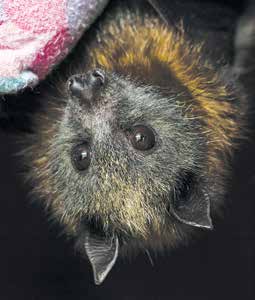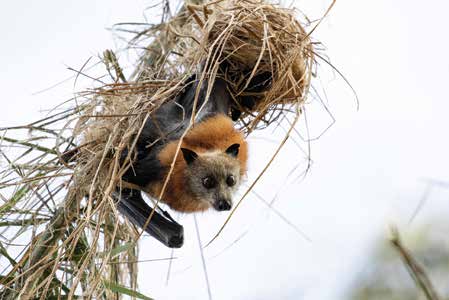Educating about Flying Foxes
I saw a comment on social media a couple of days ago regarding the flying fox colony in Numurkah. ‘Stinking damn things’ and ‘they were never this far south, they were only ever associated with Queensland’, was their first comment.
I replied that grey-headed flying foxes have been recorded as south as Melbourne for 100 years or more and they are a protected, endangered species in Victoria. The reply this prompted continued the obligatory rant about flying foxes being disgusting creatures, they can kill us with lyssavirus and Hendra so should not be protected at all.

I view education an important part of our role here at Bohollow and sometimes that can be a tough gig when faced with people who have opinions such as the ones mentioned. It doesn’t matter what facts I present, they believe they are right and shall not be swayed. For every person who refuses to be educated, there are those of us who never stop learning and for that, I am grateful.
Australian lyssavirus is basically our strain of rabies. It is carried by less than 1 % of healthy bats and it’s thought maybe between 5 to 10 % of sick bats. This is why wildlife rescuers and carers who specialise in bats should be vaccinated.
Roughly 12 years ago, we actually had a little red flying fox come into care after being found on the ground in Kyabram. Deb got bitten. The bat died the following morning. Although she was already vaccinated, Deb still went to get post-bite booster shots just in case, as the bat was displaying symptoms which could have been lyssa so we couldn’t rule it out. We sent the bat to pathology testing in Melbourne and got word back the following day that the bat did in fact have lyssavirus which was the cause of its death.

Little red and grey-headed flying foxes as well as the yellow-bellied Sheathtail bat are species found in Victoria which have been found to carry the virus. Lyssa can only be transmitted through saliva of an infected bat entering the bloodstream through an open cut or wound. This is why you should never pick up an injured or sick bat directly, just in case. Chances are many times higher that you may get killed in a vehicle accident than ever die of lyssavirus from a bat.
Hendra has never been transmitted from a bat to a person. Flying foxes are believed to be the vectors of Hendra. This means when a horse ingests urine or faeces of a bat infected with Hendra, the horse then can become a transmitter to humans. I do not know of any Victorian cases of Hendra to date.
Interestingly, Hendra does not appear to make bats sick. The benefits of bats in our environment far outweigh the extremely small risk of ever contracting either Lyssa or Hendra Virus.
Flying foxes are an important pollinator of our native forests, distributing seeds quite long distances as they can fly distances of 50 km in a night and are highly mobile during their foraging activities.

Our microbats are roughly mouse size and we have many different species in this area. They eat up to half their bodyweight in insects during a single night and are important in controlling insect numbers such as mosquitoes.
We are much more likely to contract a nasty virus such as Ross River virus from a mosquito than catching something from a bat. These creatures have been in the Australian environment for longer than humans have and have always moved around the continent, altering roost sites depending on food and climate.
Since the first population surveys ever done in the 1920’s, Flying fox numbers Australia wide have radically declined predominantly due to habitat loss.
Bats are the only mammal which have evolved independent flight like birds, which I think makes them unique and pretty special.
We need to live alongside our native wildlife and stop vilifying them whenever they inconvenience our lives . . . after all, if you look at the big picture, it is really us who have inconvenienced wildlife a lot more by destroying and altering their natural homes.


